- The DBX S is Aston Martin's range-topping SUV.
- An updated V8 engine puts out 717 horsepower.
- Lightweight components reduce the overall weight by up to 104 pounds.
2026 Aston Martin DBX S First Drive Review: More Nimble Than You Think
Aston Martin gives its SUV the S treatment, and it's pretty darn good
Hustling the 2026 Aston Martin DBX S through the farm roads north of Santa Barbara, tossing it into corner after corner, I just started laughing. This thing is ridiculous. Thoroughly and utterly absurd. It has 717 horsepower, costs as much as 10 Mazda Miatas and weighs as much as two of them. The DBX S has absolutely no business being as light-footed as it is.
S = higher performance
In Aston Martin speak, that "S" on the fender carries a lot of weight, and we don't mean the brass and glass it's made from. The company has been using S since the 1950s to denote its higher-performance models, with notable examples including the 1953 DB3 S (the very first), the 2004 Vanquish S, the Rapide S sedan and, of course, various DBS models since the 1960s.
In this case, the DBX S slots above the DBX707, which is now the "base" model. Using turbochargers from the Aston Martin Valhalla supercar, the Mercedes-AMG-built 4.0-liter twin-turbo V8 engine's output has been increased by 20 horsepower to 717 hp, with 664 lb-ft of torque available between 3,000 rpm and 5,250 rpm. A new exhaust system stacks the pipes above one another, a design that is about as cool to look at as it is to hear. Power is variably routed to all four wheels depending on need, with up to 47% going to the front wheels or nearly all of it going to the rear, which can then distribute it to whichever side has more traction. To bring things to a halt, there are standard carbon-ceramic brakes, measuring a whopping 16.5 inches in front and 15.4 inches in the rear.
Through the use of some lightweight options, you can shave 104 pounds off the DBX S' weight. These include a carbon-fiber roof that replaces the glass moonroof, a lightweight grille, and a set of forged 23-inch magnesium wheels that cut 11 pounds apiece. The last is significant since reducing unsprung weight — that is, weight not carried by the suspension — has an outsized effect on a car's handling and agility. Aston Martin also points out that much of the weight savings is on the edges of the car, which helps reduce the polar moment, that is, the ability to turn. While that's technically true, we're also talking 100 pounds taken out of a car that still manages to weigh more than 4,800 pounds, and it'd take a very keen sense to tell the difference.
The suspension has also been modified. The DBX S uses an air suspension setup with three different modes to toggle through: firm, very firm and near-track-only, all of them recalibrated for improved roll control. The anti-roll bars are electronically controlled to keep the body as flat as possible in corners while allowing compliance in a straight line. For the S, the steering is 5% quicker than the standard DBX's thanks to some clever changes to the suspension geometry.
Along with all of that are unique S styling cues. I already mentioned the stacked exhaust, but there's also a rear diffuser, redesigned front air intakes, side sills with an air splitter design, and those S badges on the fenders, which are made by jewelry maker Vaughtons. If you're privileged enough to live where you see DBXs coming and going, rest assured you'll stand out from the crowd.
Performance tech
At 4,835 pounds with the lightweight options, the DBX S isn't svelte, but it's still hundreds of pounds lighter than the Lamborghini Urus and Porsche Cayenne Turbo GT, to say nothing of heavyweights like the Bentley Bentayga. To put it in more real-world terms, it weighs a little more than a Honda Passport, but with 2.5 times more power.
The extra 20 horsepower in the S is mostly clustered at the higher end of the rev range, but the ample torque is accessible from the merest tickle of the gas pedal. Put simply: It scoots. We'll have to test one at our own track, but Aston Martin's estimate of 3.1 seconds to 60 mph sounds perfectly reasonable. The car is quiet enough at highway speeds that 60 mph and 90 mph don't feel much different. Considering how effortlessly the DBX S gathers speed, you can find yourself in a whole heap of trouble with Johnny Law in no time.
There are several drive modes, accessible through a rotary knob around the console-mounted start button. They include a Terrain mode that raises the suspension for better ground clearance in case your chateau is more snowbound than expected. I mostly played with the three road-focused modes: GT, Sport and Sport+. GT is the most civil; Sport stiffens the suspension, sharpens throttle and steering inputs, and amplifies the exhaust note; Sport+ takes things further, putting the suspension into its stiffest mode and cranking up the tailpipes to add a bit of pop and crackle when you're off the gas.
GT mode quiets the exhaust note and softens the suspension enough that it's pretty comfortable in day-to-day driving. The big 23-inch wheels still return the occasional thwack over things like freeway expansion joints, but overall the DBX S is composed on some pretty jarring roads, albeit definitely on the firm side. The stiffer suspension and steering in Sport are immediately noticeable, as is the more prominent exhaust note. Sport+ made the DBX uncomfortable on some of the rougher sections, but one feature on the car is the ability to immediately tailor various functions on the fly through console-mounted buttons. If the road is too rough for Sport+, a quick tap will soften the suspension to GT or Sport mode while allowing all the other sharpness to remain. Same goes with the exhaust note. An Individual mode lets you customize all the settings to your liking.
How does it all work?
Despite the weight, the DBX S is downright nimble on a winding road. I expected to be wrestling a bear, as I have with other high-performance SUVs. Instead, the DBX S is light on its feet, responsive to my inputs, and practically tossable in quick left-right turns. The steering response is immediate, with the car reacting as soon as you move the wheel from off-center, but it never feels twitchy or unstable. GT mode is fine around town, but Sport and Sport+ really bring out the character of the DBX S on a winding road.
Power flows from the engine in the same relentless and unstoppable way of a dam's emergency spillway. When you realize a corner is coming up a lot sooner than you anticipated, the massive carbon-ceramic brakes haul it down with little drama. The accompanying soundtrack of the 4.0-liter V8 engine induces genuine giggles, and the nine-speed dual-clutch transmission snaps off shifts in microseconds. If you live to drive but still need to take Junior to soccer practice three times a week, it's one heck of a way to combine your loves.
What about the rest?
The new dash design is a huge step forward. Gone is the dated knob-and-click infotainment interface, replaced with a much more intuitive and responsive touchscreen. The center console controls are also redone, with a more traditional gear selector and more modern-looking buttons for selecting individual features like exhaust sound, ride height, suspension stiffness, and so on. Thankfully, Aston Martin has resisted using touchscreen controls for functions like volume, temperature and fan speed, instead adding large thumbwheels to the center console and using physical buttons for most other controls.
As for the rest of the interior, what can I say? It fits the price. What isn't metal is covered in leather, and whatever isn't one of those is very high-quality plastic or carbon fiber. There's even a little strip of beautifully stitched leather between the control switches and the wireless charging pad for your phone. I don't know if it does anything, but if looking cool is its function, it does it very well.
Since it's an SUV, the DBX S is practical. The rear seats have good space even in my self-behind-self test, and I'm an inch past 6 feet tall. The cargo space can swallow anything you'd reasonably put back there — golf clubs for four, let's say — and there are even accommodations for a roof rack. The rear seats fold from the cargo area via the push of a button, and raise with another. Rear end too high? No worries, buttons in the cargo area raise or lower the rear to make it easier to load cargo. You can even tow up to 5,940 pounds, although I'm guessing the number of people who tow with their DBX can be counted on a single hand.
One area I wish had been part of the improvements is the front seats. They have great lateral support but are surprisingly flat. I got used to it, but I had a hard time finding a sweet spot.
CarPlay Ultra
The DBX S is also the first car to use Apple's new CarPlay Ultra, which takes over all of the display interfaces. I'm a big fan of CarPlay, but this system feels half-baked. It frequently lost connection with my phone, even though it was plugged in, and while the gauges and other systems worked well enough, the design is utterly basic. The standard gauges and touchscreen look much sharper and clearer, and they have an elegance that's more fitting to the character of a car like this. Hopefully future iterations will iron out some of the bugs, but for now it feels like a beta test.
Also unrefined are the DBX S' driver assist systems. It comes with a full array, including adaptive cruise control, lane keeping assistance and more. But the laggy response time felt like something 10 years old. Aston Martin is a small company, selling as many cars in a year as Honda moves in a few hours, and thus has limited resources for things like this. Still, since it works with Mercedes-Benz for its engines, maybe it can wander over to Benz's driver assist division and ink a new deal.
Make mine Minotaur Green
Pricing is squarely in the "if you have to ask" territory, but I'll tell you anyhow. The base price for a 2026 Aston Martin DBX S is $274,500, including the $4,000(!) destination charge. To that, my test car adds a pretty great-sounding $12,700 Bowers & Wilkins audio system, $1,200 worth of headrests with the Aston Martin logo embossed, all the lightweight body work that totals $12,600, and the lightweight magnesium wheels at $22,300. All that, plus a few other options, pushes the price to $350,500, just below the average price of a house in the U.S.
With so few vehicles sold each year, you're likely to be the only Aston Martin DBX S owner you ever meet. And if you do meet another, you immediately have something to talk about. That kind of exclusivity is hard to come by but worth it for those who have the means. The good news is that the car does not disappoint.

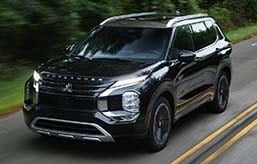
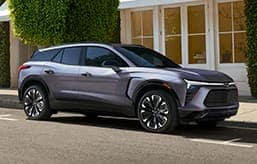
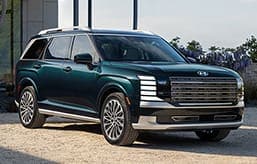
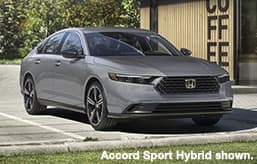
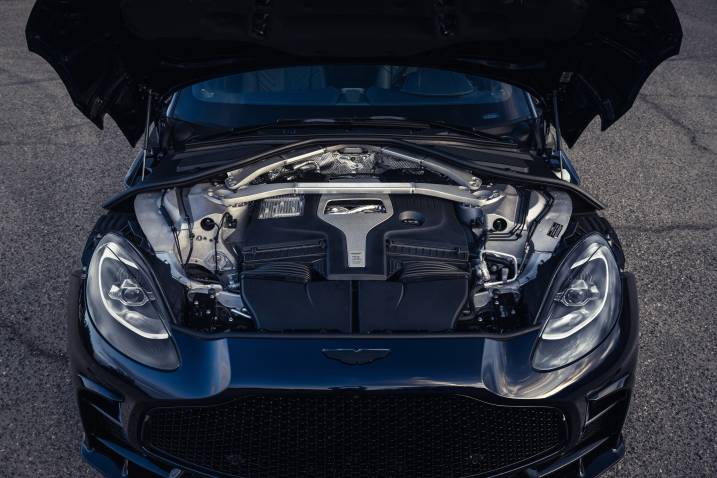
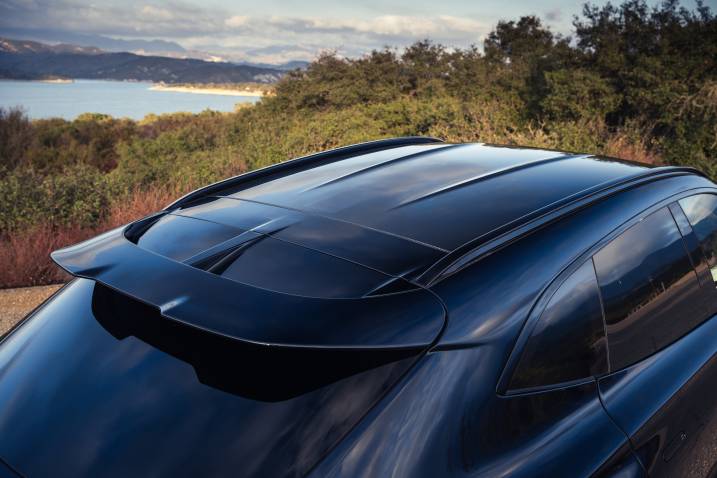
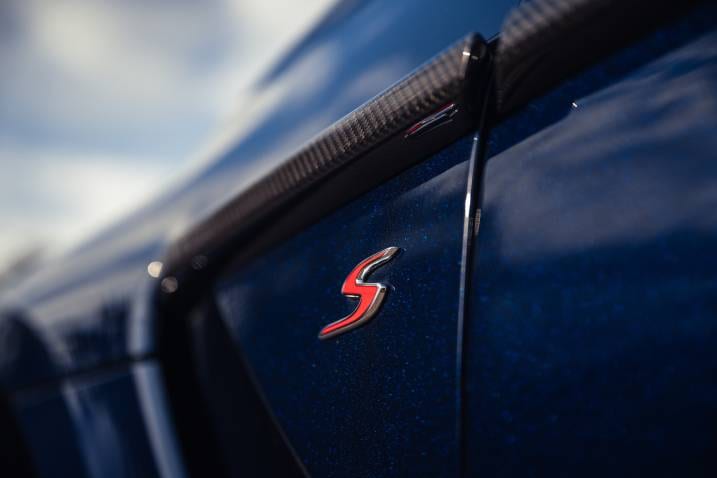
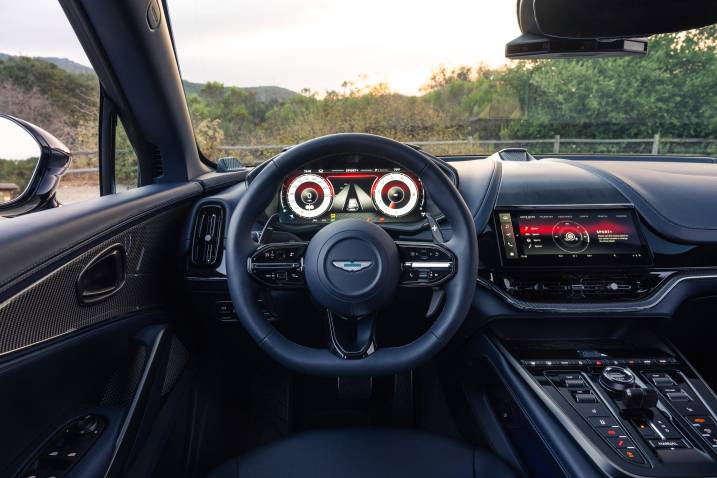
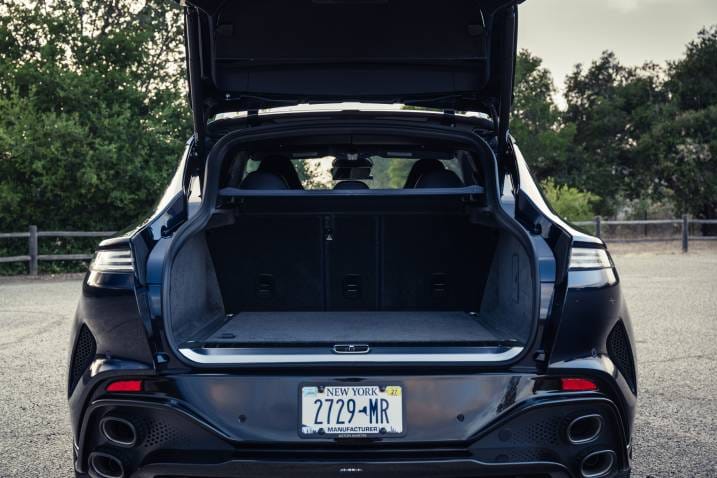
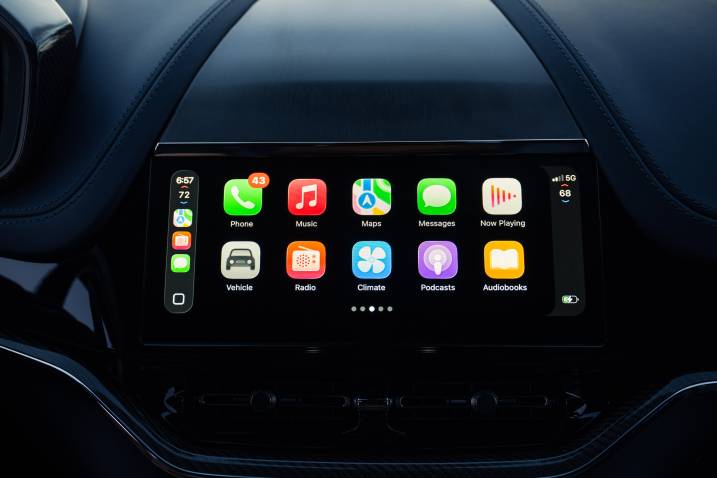
 by
by  edited by
edited by